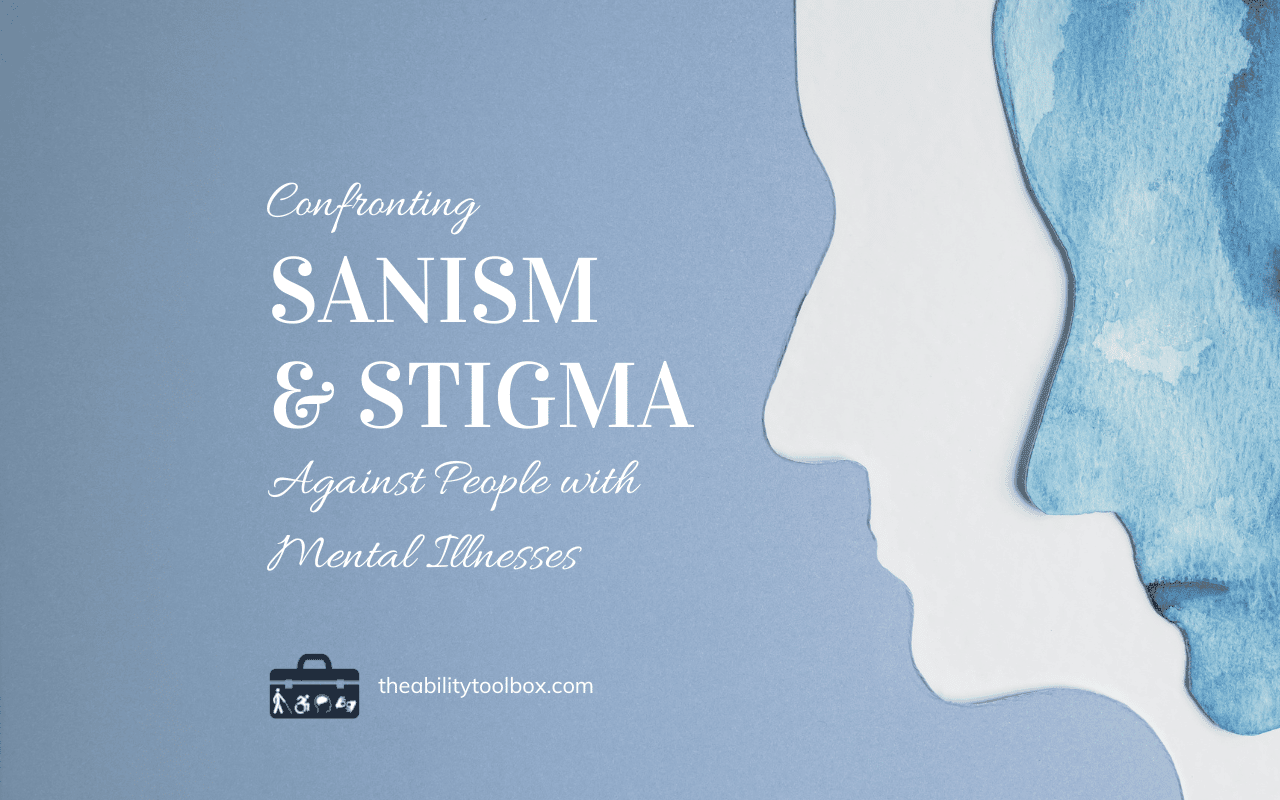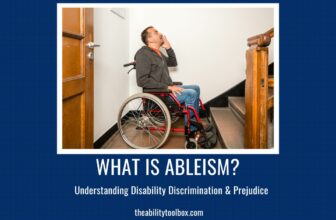
Mental illness stigma and stereotypes can be just as debilitating as mental health conditions themselves, making coping harder than it has to be.
The Origins of the Term “Stigma”
The English word “stigma” comes (via Latin) from Greek. It originally referred to a mark of disgrace branded onto a person’s skin. Those receiving this mark—whether a burn, cut, tattoo, prick, or other visible “blemish” — were considered to have a characteristic that was a source of social shame, one that deserved to be visibly highlighted to the rest of society.
The point was to identify these individuals as potential threats to others, and to the group’s survival and well-being (looking at it from an evolutionary perspective — got to look out for the tribe who are “like us,” after all).
As humans place much emphasis on appearance, we (unfortunately) habitually judge others based on what they look like. So, it’s often the case that prejudice still originates from the visual aspect. This explains (some of) the discrimination against certain ethnicities, races, disabilities, genders, religions, sexualities, etc.
But a stigmatized person doesn’t necessarily need to have a physically or behaviorally obvious trait. There is much prejudice against those with invisible illnesses. And as many people with complex mental illnesses will tell you, once you hint at or openly disclose your mental health condition to those without a history of them, it’s time to brace yourself against potential ignorance and injustice. Stereotypes and stigma still abound.
Discrimination against people with mental illnesses is also known as sanism.
Stigmatizing Beliefs About People with Mental Illness Are Universal
NAMI estimates that around 20% of U.S. adults live with a mental health disorder per year — roughly 5% with serious psychosocial illness. And according to the Australian Bureau of Statistics, about 20% of Australian adults experience a mental illness in a 12-month period, with over 40% ever having one. Generalizing from these stats, we can assume that the yearly prevalence is something like one-fifth of Western populations.
Furthermore, the WHO estimates that one-eighth of the world has a mental health condition at any given time. Bear in mind that these statistics are based only on reported and recorded mental illnesses. The actual percentages could be/are probably much higher.
But despite the prevalence of these conditions, and despite growing awareness of the biological, genetic, traumatic, and societal influences underpinning many mental illnesses, prejudice against mentally ill people is still equally widespread. Even in 2023. Ignorance about these psychosocial illnesses — which were not of anybody’s choosing (did anyone choose their brain, which is an organ like any other?) — is still common. It’s similar wherever you live.
For example, in the article “Stigma, Prejudice, and Discrimination Against People with Mental Illness,” the American Psychiatric Association (APA) states that: “The stigma of mental illness is universal.” The piece then cites a 2016 study on stigma emphasizing that “there is no country, society or culture where people with mental illness have the same societal value as people without mental illness.” Those who’ve lived in different world regions can probably attest to this.
Additionally, discrimination, stigmatizing attitudes, and abuse (of various forms) can come from those within the very occupations designated to help. From such individuals as psychiatrists, other doctors, nurses, psychologists, and so on. Research has identified these realities as yet another barrier to much-needed support.
As a fellow inpatient once told me while I was sectioned in a hospital, many healthcare and medical staff simply don’t care. “Some do,” he’d commented. “But most just want to come here, do their job, and go home. They don’t have the lived experience. They don’t know what it’s like.”
Also, we shouldn’t forget the media’s role in stereotype promotion. Journalists, filmmakers, and other producers of mass media sometimes grasp for the most sensationalistic or click-bait story, without critically thinking about the potential harm caused by their representations of mental illness (and other topics). The APA has a piece about ethically reporting on mental health conditions.
Examples of Mental Health Myths
What are examples of the ubiquitous misconceptions that the public holds about people with mental illnesses? Those without a lived or living experience of psychosocial conditions may believe, consciously or unconsciously, that mentally ill people are:
- to blame for their condition
- unpredictable
- dangerous or violent
- unlikely to recover or hopeless
- incompetent or incapable
- the victims of bad parenting
- weak or lacking willpower
- childish or immature
- cowardly
- bad, evil, or morally corrupt
- “crazy” (I cringe at this term)
- just going through a phase
- irresponsible
- untrustworthy
- lazy or not trying hard enough
- different from other people
- difficult to interact with
- unable to see the positives in life
- unwilling to just “get over it”
- attention seeking
- and so on
If you have a long history of mental ill health — especially complex, serious mental disorders — you probably can think of many more hurtful stereotypes.
In terms of myths surrounding mental illness in general, people may mistakenly believe that they are caused solely by either bad parenting, genetics, or brain chemical imbalances. It’s more accurate and useful to take a holistic, person-centered biopsychosocial approach, which “combines biological, psychological, and social factors to understand a patient.”
The Harm Caused by Mental Illness Stigma
Although many populations endure the harmful effects of stigma, the type toward those with mental health disorders is extremely strong and pervasive. Perhaps it’s an unfortunate consequence of the belief in free will and ultimate moral responsibility: we are not responsible for what our kidneys do, but we are responsible for what our brain and mind do.
Ignorance and fear lead to prejudice. Prejudice leads to discrimination.
According to this article on nurses’ stigma towards patients with mental illnesses, a “tripartite conceptualization of stigma proposes that three problems underlie stigma: problems of knowledge (ignorance), attitudes (prejudice) and behavior (discrimination).”
The previously mentioned APA article divides this mental health prejudice and discrimination into three categories: public, self, and institutional. Not only do widely held stereotypes, circulating among the public, foster shame, self-hatred, and self-stigma in the mentally ill person, but they become embodied and reflected in a country’s policies, laws, and institutions.
In addition, NAMI distinguishes another four kinds of mental health stigma: perceived stigma (related to self-stigma), label avoidance, stigma by association, and health provider stigma. The ramifications of all this can pervade every aspect of life. These negative effects may include:
- treatment avoidance
- increased symptom severity
- shame and self-blame
- hopelessness and apathy
- bias in criminal justice
- discrimination at work
- discrimination within healthcare settings
- lowered quality of life
- increased mortality
It could be said that certain conditions elicit heavier prejudice than others, such as substance use disorders, schizophrenia, borderline personality disorder, and complex PTSD. And greater public stigma creates more self-stigma.
Self-stigma refers to the stigmatized individual’s internalization of society’s negative attitudes toward them. (You may be familiar with the similar concepts of internalized racism and internalized ableism.) Most people with mental disorders are probably unaware that they may engage in self-stigma. It’s unsurprising that people internalize the dominant views of society when their survival depends on group acceptance (have we really evolved much since the tribal days?).
If you are someone who has lived experience of psychosocial ill health, you may be interested in the Internalized Stigma Mental Illness Inventory-29 (ISMI-29). The items measure social alienation, social withdrawal, discrimination experience, and stereotype endorsement.
The inventory is reliable and valid “across a wide range of languages, cultures, and writing systems.” In addition, studies using the ISMI-29 commonly produce results revealing that “internalized stigma correlates with higher depression, lower self-esteem, and higher symptom severity.”
Unfortunately, the consequences of self-stigma can have disastrous implications for someone’s life. For example, along with stigma internalization, these effects can include:
- worsening symptoms
- lowered self-worth
- self-blame and self-sabotage
- increased shame and disappointment
- suicidal ideation
- rumination
- increased morbidity and mortality
- reduced likelihood of self-actualization
- reduced likelihood of recovering
The Importance of Listening to Those with Lived Experience
The move towards centering the voices of those with lived (and living) experience is an important step in the right direction — for everyone concerned. When those with lived experience, their loved ones, their carers, and empathetic mental health practitioners are usually the compassionate advocates driving reform, awareness, and destigmatization, society benefits as a whole.
(As a side note, if we’re taking a rather cynical and pragmatic stance, it is in society’s best interests to uplift and champion every person, rather than relegate anyone to the abject, alienated fringes. That sometimes doesn’t end well.)
To fight mental illness stigma, it’s best to listen to those with firsthand knowledge. These people are not (the vast majority of) psychiatrists or psychologists. They’re the people who live every day with these health conditions, who wake up each day knowing that not only do they have to deal with the symptoms of their illnesses but with the widespread societal stigma and discrimination surrounding them.
In many instances, the latter can actually be worse than the former.
This piece was originally published on Psychreg. Photo by Kat Smith via Pexels.
Learn more about the different types of mental health stigma.
Monique Moate is a late-diagnosed autistic woman whose interest in autism spectrum disorder and disability stems from a lived-experience viewpoint. She enjoys the written word and thinking about how people use language.








